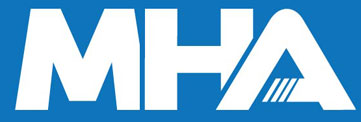Enhancing Safety and Efficiency: The Role of Safety Barriers
Date Posted:15 August 2024
Embracing the importance of safety barriers as integral elements of comprehensive safety programs supports sustainable safety practices and contributes to safer, more resilient communities for all stakeholders. Investing in high-quality safety barriers no
Safety barriers are fundamental elements in ensuring workplace safety, traffic management, and public security across various environments. From construction sites and industrial facilities to public spaces and retail establishments, these barriers play a critical role in preventing accidents, guiding traffic flow, and protecting both people and property. This article explores the importance, types, applications, and benefits of safety barriers, highlighting their indispensable contribution to safety and operational efficiency.
Importance of Safety Barriers
1. Accident Prevention: Safety barriers are designed to mitigate risks and prevent accidents by creating physical barriers that restrict access to hazardous areas. In industrial settings, they shield workers from machinery, equipment, and operational hazards, reducing the likelihood of injuries and fatalities.
2. Traffic Management: On roadways and highways, safety barriers such as guardrails and concrete barriers regulate vehicle movement, prevent cross-median crashes, and minimize the severity of collisions. They guide drivers safely through curves, construction zones, and challenging road conditions.
3. Crowd Control: During events, concerts, and public gatherings, safety barriers manage crowd flow, establish secure perimeters, and ensure orderly movement of attendees. They enhance security, prevent overcrowding, and facilitate emergency response efforts if necessary.
4. Property Protection: Safety barriers safeguard buildings, storefronts, and outdoor spaces from vehicle impacts, vandalism, and unauthorized entry. They protect valuable assets and infrastructure, reducing repair costs and operational disruptions.
Types of Safety Barriers
1. Concrete Barriers: Concrete barriers are heavy-duty structures used primarily on highways, bridges, and construction sites to contain vehicles and redirect traffic in case of accidents. They provide robust protection against vehicle intrusions and enhance road safety.
2. Guardrails: Guardrails are metal or wooden barriers installed along road edges, bridges, and pedestrian walkways to prevent vehicles from veering off-road or colliding with pedestrians. They absorb impact energy and guide vehicles safely back onto the roadway.
3. Pedestrian Barriers: Pedestrian barriers, often made of metal or plastic, create safe walkways and protect pedestrians from vehicle traffic in urban areas, parks, and event venues. They enhance pedestrian safety and separate foot traffic from vehicular lanes.
4. Safety Bollards: Safety bollards are sturdy posts installed to protect buildings, storefronts, and pedestrian zones from vehicle collisions and deliberate intrusions. They deter unauthorized access and provide visual guidance in pedestrian-heavy areas.
5. Temporary Barriers: Temporary safety barriers, including water-filled barricades and movable fencing, are used during road construction, events, and emergency situations. They facilitate quick deployment, redirect traffic, and ensure temporary safety measures as needed.
Practical Applications of Safety Barriers
1. Construction Sites: In construction zones, safety barriers protect workers from falling hazards, machinery, and construction materials. They define restricted areas, mark hazard zones, and comply with safety regulations to enhance workplace safety.
2. Roadways and Highways: On highways and urban roads, safety barriers improve traffic safety by preventing crossover accidents, containing vehicle impacts, and guiding drivers through complex road configurations. They enhance road infrastructure resilience and reduce accident severity.
3. Industrial Facilities: In manufacturing plants, warehouses, and distribution centers, safety barriers segregate pedestrian walkways from forklift traffic and machinery operations. They ensure worker safety, minimize workplace accidents, and support operational efficiency.
4. Public Events and Venues: During festivals, concerts, and public gatherings, safety barriers manage crowd movement, create secure perimeters, and direct attendees to designated areas. They promote event safety, prevent overcrowding, and facilitate emergency evacuations if required.
5. Retail and Commercial Spaces: In retail environments and commercial buildings, safety barriers protect storefronts, outdoor dining areas, and pedestrian walkways from vehicle impacts and security threats. They ensure customer safety and safeguard property from damage.
Choosing the Right Safety Barrier
When selecting safety barriers for specific applications, consider the following factors:
1. Purpose and Function: Identify the primary hazards or risks to be mitigated, such as vehicle collisions, pedestrian safety, or property protection. Choose barriers that align with the intended function and operational environment.
2. Material and Durability: Select barriers made from durable materials suited to the application, whether concrete for heavy-duty protection, steel for impact resistance, or flexible materials for temporary installations. Ensure barriers withstand weather conditions and operational demands.
3. Installation and Maintenance: Evaluate installation requirements, including anchoring methods, mounting options, and maintenance needs. Choose barriers that are easy to install, inspect, and repair to minimize downtime and ensure long-term reliability.
4. Compliance and Standards: Adhere to regulatory requirements and industry standards for barrier design, height, visibility, and impact resistance. Choose barriers that comply with local building codes, traffic safety regulations, and workplace safety guidelines.
5. Cost and ROI: Assess the lifecycle costs, including initial investment, maintenance, and operational benefits such as reduced accident rates and property damage. Balance upfront costs with long-term savings and safety improvements to justify investment in quality barriers.



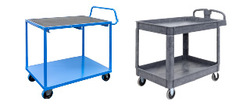
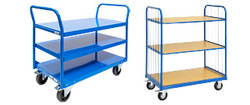
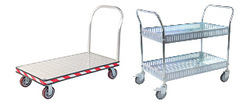

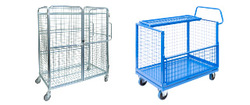
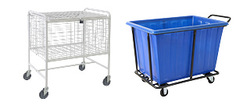

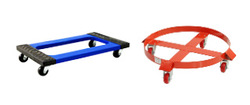

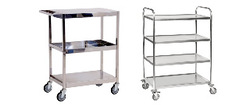

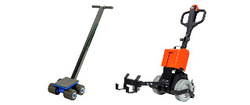

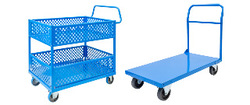
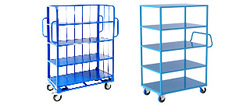
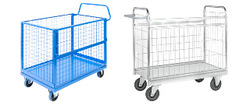
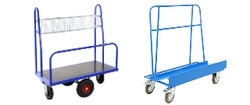
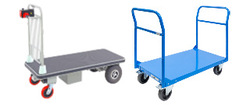
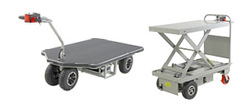




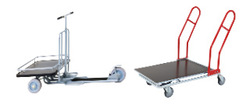
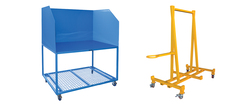











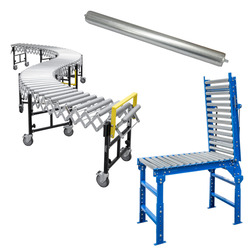





















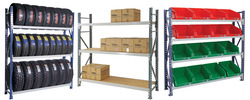
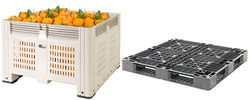




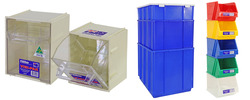

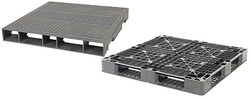

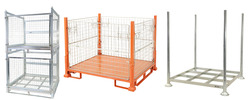
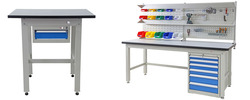
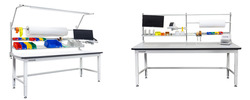

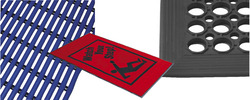
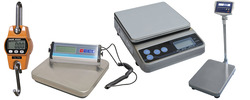







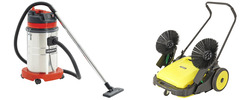











 Trolleys / Hand Trucks
Trolleys / Hand Trucks 2 Tier Trolleys
2 Tier Trolleys 3 Tier Trolleys
3 Tier Trolleys Aluminium Trolleys
Aluminium Trolleys Appliance & Hand Trucks
Appliance & Hand Trucks Cage Trolleys
Cage Trolleys Cleaning Carts & Trolleys
Cleaning Carts & Trolleys Construction Trolleys
Construction Trolleys Dollies
Dollies Foldable Trolleys
Foldable Trolleys Hospital Trolleys
Hospital Trolleys Laundry/Linen Trolleys
Laundry/Linen Trolleys Load Skates & Tow Tugs
Load Skates & Tow Tugs Mail / Office Trolleys
Mail / Office Trolleys Multi Purpose Trolleys
Multi Purpose Trolleys Multi-Tier Shelf Trolleys
Multi-Tier Shelf Trolleys Order Picking Trolleys
Order Picking Trolleys Panel Cart Trolleys
Panel Cart Trolleys Platform Trolleys
Platform Trolleys Powered Trolleys
Powered Trolleys Shopping Trolleys
Shopping Trolleys Stainless Steel Trolleys
Stainless Steel Trolleys Tool Trolleys
Tool Trolleys Utility Carts
Utility Carts Warehouse Trolleys
Warehouse Trolleys Custom Trolleys
Custom Trolleys Lifting Equipment
Lifting Equipment Forklift Attachments
Forklift Attachments Jib Attachments
Jib Attachments Lifting Hoists & Pallet Hooks
Lifting Hoists & Pallet Hooks Manual Stackers & Lifters
Manual Stackers & Lifters Pallet Jacks
Pallet Jacks Pallet Lifters
Pallet Lifters Pallet Rotators & Dispenser
Pallet Rotators & Dispenser Powered Pallet Trucks & Electric Lifters
Powered Pallet Trucks & Electric Lifters Scissor Lift Trolleys and Tables
Scissor Lift Trolleys and Tables Conveyor Equipment
Conveyor Equipment Conveyor Frames
Conveyor Frames Conveyor Stands
Conveyor Stands Roller Conveyors
Roller Conveyors Skate Wheel Conveyors
Skate Wheel Conveyors Access Equipment
Access Equipment Container & Yard Ramps
Container & Yard Ramps Step Stools & Ladders
Step Stools & Ladders Work Platforms & Crane Cages
Work Platforms & Crane Cages Drum Handling
Drum Handling Drum Storage & Bunding
Drum Storage & Bunding Drum Trolleys & Lifters
Drum Trolleys & Lifters Forklift Drum Handling
Forklift Drum Handling Containment & Spillage
Containment & Spillage Aerosol Cans Storage Cages
Aerosol Cans Storage Cages Bunded Pallets & Storage
Bunded Pallets & Storage Corrosive Goods Storage Cabinets
Corrosive Goods Storage Cabinets Flammable Liquid Cabinets
Flammable Liquid Cabinets Forklift Gas Storage Cages
Forklift Gas Storage Cages Gas Cylinder Storage
Gas Cylinder Storage Site Storage
Site Storage Spill Kits
Spill Kits Stillage Cages
Stillage Cages Waste Handling
Waste Handling Bin Lifters & Tippers
Bin Lifters & Tippers Plastic Waste Bins and Carts
Plastic Waste Bins and Carts Steel Waste and Tipping Bins
Steel Waste and Tipping Bins Storage Equipment
Storage Equipment 750 Series Cage Configurations
750 Series Cage Configurations Heavy Duty Cabinets & Benches
Heavy Duty Cabinets & Benches Heavy Duty Shelving
Heavy Duty Shelving Mega Bins & Pallets
Mega Bins & Pallets Packing Benches
Packing Benches Pallet Racking Accessories
Pallet Racking Accessories Parts Trays & Stor-Pak Bins
Parts Trays & Stor-Pak Bins Pegboard & Louvre Panels
Pegboard & Louvre Panels Plastic Bins
Plastic Bins Plastic Handling Solutions Bins
Plastic Handling Solutions Bins Plastic Pallets
Plastic Pallets Stack & Nest Bins
Stack & Nest Bins Storage Cages
Storage Cages Workplace Equipment
Workplace Equipment Workbenches
Workbenches Modular Workbenches
Modular Workbenches Electric Height-Adjustable Workbenches
Electric Height-Adjustable Workbenches Floor Matting
Floor Matting Industrial Weighing Scales
Industrial Weighing Scales Pallet Wrapping & Packaging Machinery
Pallet Wrapping & Packaging Machinery Ramps
Ramps Stationery Cupboards
Stationery Cupboards Storage and Stillage Cages
Storage and Stillage Cages Tool Trolleys
Tool Trolleys Tooling Cabinets
Tooling Cabinets Wheelie Bins
Wheelie Bins Workshop Equipment
Workshop Equipment Safety Equipment
Safety Equipment Gloves and PPE
Gloves and PPE Pallet Rack Post Protectors
Pallet Rack Post Protectors Safety Barriers & Bollards
Safety Barriers & Bollards Safety Knives & Cutters
Safety Knives & Cutters Signs and Traffic Supplies
Signs and Traffic Supplies Tool & First Aid Boxes
Tool & First Aid Boxes Construction Equipment
Construction Equipment Concrete Equipment
Concrete Equipment General Site Equipment
General Site Equipment Lifting Equipment
Lifting Equipment Site Storage
Site Storage Waste
Waste 









